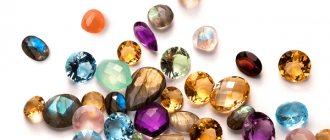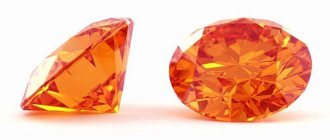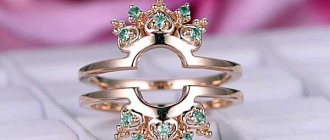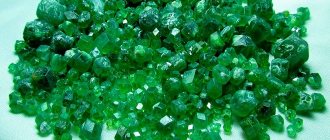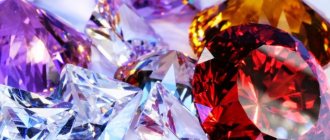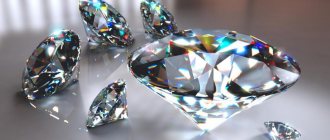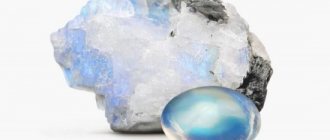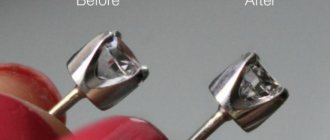History of the stone and other names
Stones among ancient peoples had cult significance. The miraculous power they possess has been attributed to the spirits within. Stone amulets were placed near the home. They protected from evil spirits, protected people, livestock and poultry from diseases.
In order for the energy of the stone to be used usefully, it should not go into the ground. However, making a hole in solid rock was not easy, and no one dared to anger the “petrified” god.
The one who found the “holey” stone was considered a happy person. A successful find was hung nearby from chicken roosts. After this, they did not lose the feather and flew better. The amulet no longer allowed the evil kikimora to scare and pluck the chickens at night.
The stone was given the name Chicken God (chicken god), which remains the most common.
With the use of magical properties for different purposes, other names appeared.
- Dog God (Dog's Happiness).
- Witch stone.
- Snake egg.
- Boglaz (Eye of God).
Over time, they began to carry the lucky find with them as a talisman stone.
Impact on the body and energy field
A stone with a hole simultaneously possesses the energy of Earth and Water. Its biofield interacts with a person and affects physical activity, mood and health. It has a cleansing effect and has a beneficial effect on the human body and thoughts.
Under the influence of this stone, people become more serious and responsible. It stimulates activity and progress towards goals.
A stone with a hole is conducive to favorable communication and attracts the interlocutor on an emotional level. Blocks negative energy, suppresses the manifestation of envy and anger.
Signs
It is rare to find a talisman. Moreover, a random find is considered lucky. A specially found stone will not have all the properties as one that caught your eye unexpectedly.
Folk signs speak of the luck and good fortune of a person who is lucky enough to find a miraculous talisman.
“Chicken god – one step to happiness!”
“Finding a stone with a hole means good luck!”
Where can I find a stone with a hole?
The structure of the stone is varied. It may contain voids and inclusions of soft rocks. When exposed to water and other stones, the soft rock is washed away. Thin side walls wear away, turning voids into holes.
The Chicken God is a stone with a hole, created by “moving” water. You can find a miraculous talisman on the banks of mountain rivers, seas, and pebble and shell beaches. It is impossible to find a talisman near standing water.
The movement of waves on the sea and streams in the river does not just sharpen and transform rock. The energy of water cleanses the stone and charges it with additional energy.
Why do you dream about the chicken god?
A talisman seen in a dream during a difficult period of life portends good events:
- quick solution to the problem;
- way out of a difficult situation;
- the appearance of a like-minded person;
- help in overcoming difficulties.
The hole in the stone symbolizes an energy breakthrough and a way out of stagnation. Finding a stone with a hole in a dream means quick changes in life:
- change of place of work;
- career advancement;
- new relationships.
What are the stones made of?
It is impossible to talk about rocks and the minerals that make up these rocks without talking, at least in general terms, about crystals.
Many people associate the concept of “crystal” with a solid and necessarily transparent substance that has a unique natural cut. It is often said: “crystal clear” or “transparent as crystal.” High moral qualities of a person are often characterized by the words: “a person of crystal soul.”
In fact, not every crystal is pure and transparent, and, at the same time, not every transparent mineral is a crystal.
Everyone is well aware of the beautiful transparent colorless crystals of rock crystal, which, apparently, served as the material for creating the above figurative metaphor. However, there is a variety of rock crystal, pitch-black in color, morion. There are also crystal crystals that appear to be smoked, called smoky rock crystal.
There are also many opposite examples, when a pure and transparent mineral does not belong to crystalline substances, such as, for example, amber or an artificial mineral substance - glass.
All minerals are natural chemical compounds and are divided into two large groups: crystals and non-crystals.
What are crystal and non-crystal and how do they differ from each other?
First of all, the main feature of all crystals is their natural cut. Sometimes crystals have such regular facets and such beauty of shape that even a skilled jeweler can envy their perfection.
Each crystalline mineral forms very specific crystals characteristic of it. But at the same time, depending on the conditions of crystal formation, some of its faces sometimes develop more slowly than others, and as a result, the shape inherent in a given crystal can be distorted.
The shape of a crystal is not random; it to a certain extent reflects its content, or rather, the order of arrangement of atoms that is inherent in a particular mineral with a certain chemical composition.
Consequently, crystalline substances are solids whose atoms, ions or molecules are arranged in a certain order, forming a spatial crystal lattice. If crystalline substances are formed naturally on the surface of the Earth or in its interior, they are called crystalline minerals.
The order of arrangement of atoms in a crystal is its essential qualitative characteristic, on which the physical properties of the crystal depend: hardness, thermal conductivity, electrical conductivity, optical properties, etc. For most crystalline substances, these properties change depending on the directions passing inside the crystal. You can easily verify this. Take a slab of gypsum crystal and cover one side with a thin layer of wax or stearin, then touch that side with a hot needle and you will see the wax melt around the needle, forming an ellipsoidal shaped spot. This means that in the direction of the long axis of the ellipse, gypsum conducts heat better than in the direction of the short axis,
For a geologist studying the mineralogical composition of rocks, the optical properties of crystals are especially important, since rocks consisting of tiny crystals are most often examined under a microscope, with the help of which minerals are recognized precisely by their optical properties. Most crystalline minerals have the above-mentioned feature - diversity of properties, or anisotropy, which is clearly manifested in optical properties. And only a small group of crystalline minerals have the same optical properties in all directions of the crystal; such substances are called equivalent, or isotropic, - for example, rock salt, diamond, garnet and some others.
Non-crystalline minerals are always isotropic; for example, they include: volcanic glass, amber, opal and many others.
In order to more clearly imagine why most crystalline substances have different properties, and non-crystalline substances have equal properties, let us make the following comparison.
Let's say a column of soldiers is built, four in a row. It is known that in a formation, row from row is at arm's length, and in each row the soldier is only two palms' width apart from the soldier. You can quite easily and therefore quickly walk between the rows, that is, in the direction indicated by arrow B, but it is difficult to pass in the transverse direction indicated by arrow A; you will have to literally squeeze between the soldiers standing side by side. It is even more difficult to pass through the formation in the diagonal direction, which is shown in the figure
arrow B. If you imagine a crowd of people standing without any order, it is clear that when passing through it, you will experience approximately the same resistance to your movement in any direction.
The arrangement of atoms in a crystalline substance is to a certain extent reminiscent of the arrangement of people in a formation. Therefore, the resistance experienced by a ray of light passing through a crystalline substance is different in different directions. The same ray encounters the same resistance and passes with the same speed in all directions through a non-crystalline substance in which the molecules and their constituent atoms are arranged in disorder.
The above comparison, of course, does not fully reflect the internal structure of a crystalline substance and its physical properties, which depend on the structural features of atoms and their bonds in the crystal. You can learn more about this from special manuals, popular science books and brochures on crystallography.
The variety of crystals is manifested in many ways: in color, shape, size and other properties. There are giant crystals, such as, for example, a quartz crystal weighing about 10 tons found in Ukraine or a mica crystal more than two meters long. Most rocks consist of microscopic crystalline grains, the sizes of which are often so small that they can only be seen with an electron microscope, which magnifies hundreds of thousands of times. Many clays are composed of such tiny crystals. The color and shine of many crystals are amazing and incomparable. Gemstones are famous for these properties: red rubies, green emeralds, yellow tourmalines and topazes, green in daylight and red in artificial light, alexandrite, a diamond that is colorless or faintly colored in bluish or yellowish tones, but has exceptional brilliance due to high refraction there are rays of light in it. A diamond is always given an artificial cut to enhance its brilliance and “game”; Such an artificially cut diamond is called a diamond. The hardness of this mineral is the highest among both minerals and artificial alloys. This is explained by the peculiar crystal lattice of its crystal, in which the carbon atoms are arranged especially tightly. It is curious that graphite, which is no different in composition from diamond, also consisting of carbon, but having a different crystal lattice, a different arrangement of atoms, has completely different properties. This is a black, opaque mineral with a metallic sheen, which is one of the softest mineral substances and is therefore used for the production of pencils.
Most crystals not only refract a ray of light, but also bifurcate it. This property is especially pronounced in transparent calcite (which is otherwise called Iceland spar). If, for example, you look through a crystal of transparent calcite at some small object, it will have a double image.
Crystalline and non-crystalline minerals have many of these properties, or, as they say, external signs, by which they can be recognized even without the use of any instruments. These include: hardness, color of the mineral and its powder, shine, cleavage (the ability to split in certain directions), solubility, transparency, the nature of the fracture surface and, less often, taste and smell.
Some properties that distinguish minerals are determined only with the help of special devices, instruments, or even in laboratories. These include the chemical composition of minerals, fusibility, reactions with other chemicals, light refraction, specific gravity and some other properties.
The above already gives some idea about crystalline substances. It remains only to clarify the concept of a mineral, which is much broader than the concept of a crystal. Meanwhile, many people ignorant of mineralogy identify them.
A mineral is a natural homogeneous formation of a certain chemical composition, located in a solid, liquid or even gaseous state.
Consequently, the world of minerals is incomparably richer than the world of crystals, since it includes not only all natural solids - crystals, but also solid non-crystals, liquids and gases (ultimately, any liquid and gas under certain conditions of temperature and pressure can be turn into a solid).
Minerals are formed as a result of physical and chemical processes occurring in the interior of the Earth and on its surface.
About three thousand minerals are known to science, but most of them are very rare. Only 300-350 minerals are widespread and make up almost all the stones or rocks around us.
The world of insects and plants is much more diverse than the world of minerals. However, insects and plants are distributed only on the surface of the earth and in water basins, and only to a small depth do living organisms penetrate into the bowels of the earth.
The mineral world is omnipresent. There are minerals everywhere. The entire globe, from its heavy iron-nickel core to the rocky crust, consists entirely of minerals. The water of rivers, lakes, seas and oceans is also a mineral (only liquid) with salts dissolved in it, also minerals. The gaseous atmosphere surrounding the Earth is a mineral. The bodies of animals and plants contain many minerals, including crystalline substances.
In a word, minerals are everywhere: we walk on minerals, breathe minerals, eat many of them, cook in mineral dishes, build houses from minerals, most of the fuel is minerals, almost all of our industry (especially heavy industry) mines and processes minerals. Human life is unthinkable without minerals. Moreover, organic matter itself, the first cell, arose from mineral substances, because the primary substance of our planet were minerals.
Many great and outstanding people of our Motherland studied the minerals and rocks they consist of, their structure, composition, formation and history. The names of these scientists are known throughout the world: from the founder of Russian mineralogy and geology, the great Lomonosov, to the outstanding mineralogists of the Soviet era - Vernadsky and Fersman, who laid the foundation for a new geological science - geochemistry.
Perhaps no one loved stone as much as its deep expert, Academician Alexander Evgenievich Fersman. He was not only a famous mineralogist and geochemist, the inspirer of many discoveries of new mineral wealth in our country, but also the initiator of new branches of the mineral industry. His students said about A.E. Fersman that he wanted to penetrate the “soul of minerals.” In any case, he understood their “language” and could cognize them. It is no coincidence that A.E. Fersman took as the epigraph to one of his most fascinating books the words: “...And the stones speak.”
A.E. Fersman has a lot to do with Crimea. Here he spent his childhood years, coming with his parents for the summer to the village of Totaykoy, which now bears the name of the scientist and is called Fersmetovo. This village is located eight kilometers from Simferopol along the Alushta highway, at the top of the Simferopol reservoir.
As a six-year-old boy, Fersman began collecting beautiful pebbles along the banks of Salgir and in quarries, became interested in their origin and fell in love with stones for the rest of his life.
Later, already being a prominent scientist, A.E. Fersman also visited the Crimea and wrote many fascinating pages about the minerals of the Crimea.
We have said very little about the nature of crystalline and non-crystalline mineral matter. We have opened only a small crack in the curtain hiding a rich and fascinating field of knowledge - crystallography and mineralogy. Opening the curtain wider or even lifting it completely is the task of those who want to study geological sciences more deeply.
The world of minerals is rich. Each mineral has its own history, even several stories: the history of discovery, the history of industrial development and, finally, its own history - origin, development, change.
If you find an error, please select a piece of text and press Ctrl+Enter.
Varieties and colors
Not only pebbles are used as a talisman, but also shells with a washed hole. The size, shape of the stone and the possible image on it give the amulet additional properties.
| Form | Interpretation |
| Animal | Loyalty, devotion, wisdom, longevity |
| Human head (face) | Beauty, feelings, reliable support |
| Heart | Sensuality, tenderness, love |
| Coin | Material well-being, stability |
| Round | Unity, perfection, stability |
| Oval | Protection, new life, exaltation |
| Triangular | Unity of flesh, soul, mind |
The biofield of a stone with a hole is determined by color.
Orange
The color of warmth, coziness and comfort. The stone will attract support from loved ones, consolation and reassurance. Blocks indifference, activates responsiveness, and forms a positive attitude towards change. Helps move forward and complete things started.
White
Promotes renewal of thoughts, cleansing of soul and body. Helps in new beginnings and learning. Encourages a person to be honest and frank. Blocks negative qualities: deception, betrayal, envy.
Blue
The stone stimulates the development of creativity, reveals talents and abilities. For people who are passionate about work, it helps to finish what they have started. The blue amulet provides a chance to those who are desperate and have lost hope.
Red
The color of love and sensuality. The owner of the stone will turn feelings into flaming, passionate and durable ones. Red color stimulates you to look better and be more confident.
Black
It has a powerful charge and absorbs negative energy. The stone protects against the evil eye, envy and bad thoughts. Increases business activity and organizes efficiency.
Green
Responsible for health. Ensures a speedy recovery and wards off illness. Replenishes energy, stimulates renewal and moving forward.
Colored spots
A “spotted” amulet is often found, which can combine different colors. Diversity gives the talisman versatility. The more spots of different colors, the happier the find.
Stones from a chemical point of view
As already noted, by their nature the elements in question are rocks. Therefore, from a chemical point of view, a stone is a substance. The composition is usually determined by a combination of various metal oxides and their salts.
For example, the chemical composition of the well-known emerald and ruby is almost the same - aluminum oxide AL2O3. The color varies due to different impurities of other elements and light absorption capacity.
We can name several chemical groups of compounds that underlie the composition of all natural, including precious, stones:
- native elements (diamond - C);
- halides;
- sulfides;
- oxides;
- phosphates;
- borates;
- sulfates;
- feldspars;
- scapolites;
- sadolites;
- carbonates;
- silicates;
- grenades.
Each group has its own types of stones, numbering in hundreds of varieties. They can differ not only in composition, but also in color, shape, size, transparency, and density.
What properties does it have?
A hole in a stone represents victory over difficulties and physical ailments. The hole in the middle maximizes its properties. A stone donated by nature itself protects its owner from troubles and troubles. Regardless of color and shape, it has a number of magical properties.
Protective
The talisman symbolizes the feminine principle. It protects the keeper of the home from illness, helps to cope with children and the household.
Perfect for people who have a dangerous job and put their lives at risk. Helps along the way, protects from danger.
Magical
According to legend, the stone with a hole became popular due to its magical properties. It scares away evil spirits and evil spirits. Therefore, you can wear the stone not only on your body. It is hung in the house at the entrance, near the crib of a child or adult. It improves sleep and relieves nightmares. The stone attracts good luck into life.
Healing
Actively absorbs negative energy. It is recommended to place it at the level of diseased organs. The energy field of the stone has a beneficial effect on the course of the disease. The spirit of the stone lifts you out of depression, drives away bad thoughts, and lifts your spirits.
Artificial stones: classification
Such structures can be divided into four main groups:
- acrylic;
- polyester;
- quartz agglomerates;
- cast marble.
The main feature of each of them is that they are created artificially by man, and therefore are not found freely in nature. Their properties are not inferior to, and sometimes even superior to, those of natural samples.
The main areas of use are the manufacture of countertops, sinks, laying out walls, floors, window sills and other surfaces.
Stone as a talisman or amulet
It is not surprising that the ancients began to carry the miraculous stone with them. Powerful energy allows it to be used as a talisman. In order for it to work effectively, it cannot be given to anyone or given for temporary use to others.
Do I need to charge?
At the time of discovery, the talisman is already charged with the necessary energy. The found stone must be activated. To do this, it is clamped in a fist and “warmed”. In this case, you need to concentrate and say to yourself or out loud:
“The power of stone, air and water, protect me from troubles, bring me luck and happiness!”
How to wear and care?
The stone can be worn as a pendant. To do this, you need to choose a wool thread that matches the color of the stone or a leather cord. The ideal location is at the solar plexus. Direct contact of the amulet with the body ensures the intersection of biofields and the effective manifestation of properties.
You can wear the amulet every day. However, it should be understood that the stone periodically needs to rest and get rid of accumulated negative energy.
Together with a car or house key, the stone will also work. With this option, you need to touch it more often and “listen” to your talisman. It is not recommended to constantly carry a pebble in your wallet. It must feed energy from air and water.
To clean the amulet, you need to wash it with running water. When used daily, at least once every 10 days.
Tattoo or drawing
The image on the body of such a talisman, regardless of shape and color, does not have magical or healing properties. The amulets created by nature are endowed with its energy and willingly share it with people through direct interaction.
Metamorphic rock formation
About 20% of all stones are of metamorphic origin (from the Greek word “transformation”). This means that under the influence of heat, pressure, tectonic shifts, water, an igneous or sedimentary mineral is completely transformed, turning into some other one. For example, marble was formed from calcite, quartzite from sandstone, garnet from silicates.
The most famous precious gems that appeared through metamorphism:
- Vesuvian;
- staurolite;
- epidote;
- nephritis;
- sapphire;
- ruby;
- jasper;
- alexandrite;
- emerald.
Metamorphic rocks are divided into:
- to layered - resulting from the accumulation of sediment (gneiss, slate);
- non-layered (marble, quartzite).
Additionally, see educational material from a geologist:
Conspiracies
The stone not only fulfills wishes, but also hears what is asked of it. Therefore, with bodily and mental contact, it can be used for certain purposes. Conspiracies help direct energy in the right direction.
From illness
Apply to the sore spot and say three times:
“The power of the stone stops pain, take all ailments upon yourself!”
This method can be used when:
- toothache;
- migraine;
- back pain;
- bruises.
For pure thoughts
Feedback from an unrefined stone brings up difficult thoughts, fears and concerns. If thoughts become intrusive, it should be rinsed and left in clean water overnight. Looking at a stone in the water, you need to say three times:
“Clean water means pure thoughts for the stone and for me!”
It is better to dry the stone in the sun, for example on the windowsill of a south-facing window.
For good luck
You can convey a request to attract good luck into your life by squeezing the stone in your hand and saying three times:
“Failures come from us, and success comes to us!”
When casting conspiracies, you need to concentrate on your thoughts and believe in the connection with the talisman.
Wish come true
To fulfill a wish, you need to look through the hole at the Moon or the Sun and make a wish. The size of the hole does not matter at all. The hole in the stone is the eye of the spirit through which the unknown is comprehended.
Mining process
Natural stone is mined everywhere and on all continents. Typically, transportation is not cheap (the cost is influenced not only by the quality of the rock, but also by the method of extraction and transportation costs: when extracting stones from the Earth, it is very important to preserve the appearance of the rock).
Since natural stones have different strength and hardness, different methods and equipment are used to extract them.
To do this, the deposit is opened up, creating a vertical shaft leading into the quarry. Many countries use the drill-and-blast method and the air cushion method: using drills, they make a hole, lay a charge, or pump in air.
As a result, the rock falls into pieces (even though these methods are cheap, the valuable properties of the rock are lost because it is heavily crushed, which leads to significant losses of raw materials). A more expensive, albeit effective method is the stone-cutting method: it allows you to extract natural stone without much loss.
Dimensions
Natural stones come in different sizes: the largest stone is a rock (formed after a mountain with a large number of cracks is destroyed), followed by blocks, blocks, monoliths and smaller pebbles. Those used in construction can be both small in size and real giants: a large stone often has dimensions exceeding 10 cubic meters (these monoliths are especially valuable due to the difficulty of extraction and transportation). Large stones that do not have cracks are divided into:
- Blocks are large rectangular stones, the size of which exceeds ten cubic meters, they are used when laying foundations, cyclopean masonry, and in monumental monuments;
- Monumental - from 5 to 10 m3, monuments, sculptures, ceilings are made from it;
- Unique - size 2x1x1.5 m, monuments, sculptures, columns are created from it;
- Piece - the size exceeds 1 m3, they make quads, sculptures, vases, bowls, as well as blocks, cobblestones, and natural stone borders.
The size classification does not end there, for example, the height of boulders ranges from 20 cm to 10 m, crushed stone ranges from 5 to 15 cm, pebbles range from 1 to 10 cm, and thin plates are considered the smallest (they are used for cladding, in mosaics and stained glass) – from 1 to 10 mm.
Rock hardness
Another important characteristic of natural stone materials is such properties as their strength and durability, that is, the ability to maintain their qualities regardless of external influences. According to this indicator, natural stones are divided into:
- Highly durable - they begin to collapse after six hundred years, these include quartzites and fine-grained granites;
- Durable - begin to crumble after two centuries (coarse-grained granites);
- Relatively durable - destruction begins after a hundred years (white marble, dense limestone, dolomite);
- Short-lived - they begin to crumble after a quarter of a century (colored marble, porous limestone, gypsum).
When characterizing a rock, its structure is also taken into account: the size and shape of mineral grains, the degree of crystallization, granularity (how evenly distributed the mineral grains are and whether there are voids). For example, in order to find out which stone is more durable, just look at its components: a fine-grained structure is stronger than a rock with large grains or an uneven structure.
A large stone, the grain structure of which is uneven, is poorly resistant to environmental influences: mineral grains of different sizes expand differently when the temperature changes, which is why large stones crack, and if water gets into the cracks, natural stones continue to collapse.
Is it possible to buy?
You can buy a pendant made to look like a natural talisman. Such products are sold in any retail stalls in resort towns located by the sea. The pendant is made of natural stone, but a hole is drilled in it. Often, pebbles are painted in different colors and a different image is applied. You can buy such a souvenir yourself and give it as a souvenir to friends and family.
A real helper stone will protect you from troubles, support your mood, spirit and will definitely lead to good luck.
Do you have such a Chicken God? Did it benefit you? Share your experience in the comments below.
Types of natural stones for health
- Aventurine.
This type of natural stone, such as aventurine, can relieve various rashes, neurodermatitis, allergic dermatitis, and cope with hair loss. Jewelry with aventurine normalizes blood pressure. This stone will help people suffering from diseases of the cardiovascular system and blood circulation. In addition, it can be used to heal a wound or get rid of a wart. This mineral is worth having on hand. In addition to jewelry, special massage balls are made from aventurine.
- Agate.
This type of natural stone (pictured below), like agate, will help if you cannot get rid of a cough for a long time and often suffer from throat diseases. In addition, it cleanses the body of toxins and also helps normalize the acidity of gastric juice.
In addition, with the help of agate you can get rid of stress and overcome various fears. Agate beads will bring relief to asthmatics, as well as those who are susceptible to bronchitis or suffer from toothaches. Blue agate is suitable to combat the manifestations of osteochondrosis, and green agate is suitable for diseases of the cardiovascular system and pancreas.
Where to buy this or that type of natural stone
Humanity has been talking about the magical properties of stones, crystals and metals since the times of the Ancient World. Touch a tradition that is thousands of years old!
There is nothing complicated in working with magic stones; it is a safe and effective way to improve your life. Among the magic stones there are amulets, assistants in financial matters, good luck talismans, energy conductors, crystals that call for happy love. These magnificent gifts of the earth can do anything!
Too many choices? Write to [email protected] or call: 8-800-333-04-69. We are also always in touch on Facebook, Telegram, VK and WhatsApp.
"Witch's Happiness" - the magic begins here.
Types of natural stones that can destroy a family
However, a number of minerals have a less clear effect on a person and his relationships with other people. Let us dwell in a little more detail on those natural stones, their types and names that can cause harm. However, even if you have certain knowledge, do not forget to listen to your own intuition. It is quite possible that a stone that carries a negative charge for others will, on the contrary, bring happiness and love into your life.
- Amethyst.
This stone is popularly called the “stone of new love” or “the stone of old bachelors.” It can easily evoke feelings towards the person giving it, even if the recipient is not free. The energy of this stone is such that it can cause indifference to a partner in an existing relationship, opening a vessel for filling new love.
Amethyst is especially dangerous for married women. Jewelry with this stone is not given to young girls or other people's wives. Some nations adhere to a custom according to which one of the spouses who have lost their soul mate and do not want to start a new family wears an amethyst as a symbol of eternal love for the departed spouse.
- Alexandrite.
Some peoples give it a bad name, calling it the “widow’s stone.” According to ancient belief, a woman wearing such jewelry will remain unmarried forever, and if she is married, she will not find happiness in it and will eventually become a widow. However, girls who have tender feelings for this stone need not fear the consequences if they wear it in pairs.
- Opal.
The history of this stone is not clear. On the one hand, it is called a talisman of love, and on the other, it is believed that its presence brings love failures into life. For the same person, opal can serve as a talisman, protecting against base desires and whims, or, on the contrary, it can push one to receive forbidden pleasures.
Jewelry containing this mineral should be given with great care. Keep in mind that such a gift may cause a negative attitude towards the giver. An interesting feature is that the higher the value of the gift, the more hatred it can cause towards you.
